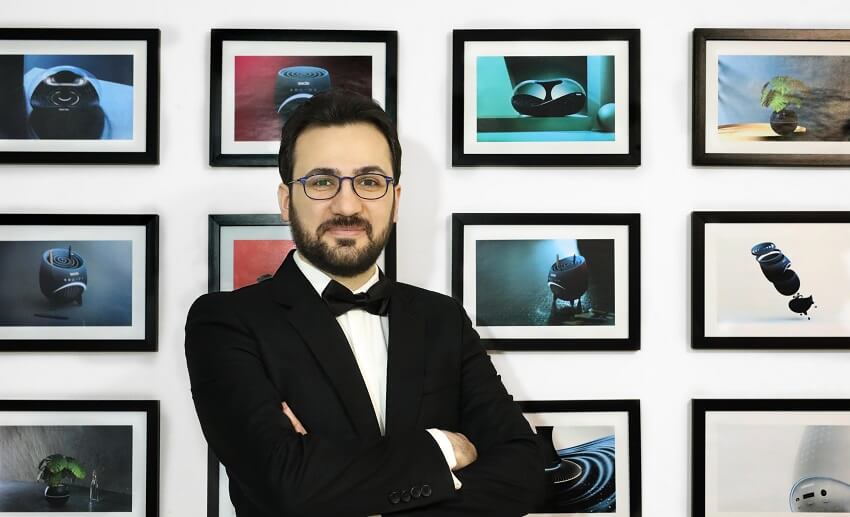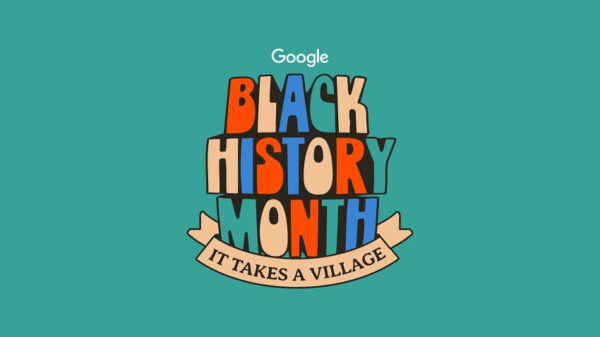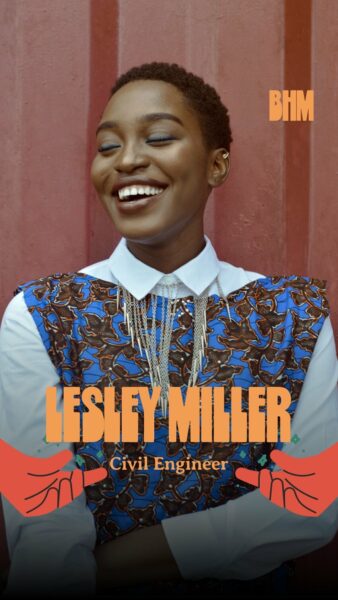
C2A Juror Arvin Maleki: Shaping the Future of Design

About Arvin Maleki
Arvin Maleki, the creative force behind Futuredge Design Studio, stands as a luminary in the design realm. His accolades are as impressive as his portfolio, being the gold winner of A’design and securing top positions in global design rankings. Beyond design, Arvin is an expert in computer systems architecture and artificial intelligence, with over ten published books in these fields. His multidimensional expertise positions him uniquely in the intersection of technology and design.
Fun Facts about Arvin Maleki
– Arvin Maleki ranked 20th globally in the digital and electronic device category in 2020.
– He secured the 32nd position in the futuristic design category worldwide in 2020.
– Recognized as the 731st best designer in the world 2020/2021 R+ Designer Rankings.
– Arvin holds the esteemed title of the seventh-best designer in Iran based on World Design Rankings.
Exclusive Interview with Arvin Maleki
1. As a juror for the Creative Communication Awards (C2A) 2023, what specific criteria did you find most essential in evaluating submissions, and how did these align with the overall goals of the awards?
Arvin Maleki: As a juror for the Creative Communication Awards (C2A) 2023, I prioritized several key criteria in evaluating submissions:
1. Innovation: It’s imperative to look for entries that push boundaries and explore new horizons in design and communication. For an award as prestigious as C2A, we aim to recognize pieces that aren’t just iterations of existing concepts but bring fresh perspectives.
2. Relevance: In today’s fast-paced world, communication must resonate with its audience. I look for designs that are timely and pertinent to current societal, cultural, or market trends.
3. Effectiveness: Beyond aesthetics, it’s about how well the design communicates its intended message and evokes the desired reaction. This includes clarity of message, emotional impact, and potential for meaningful engagement.
4. Aesthetic Excellence: Naturally, as a design award, aesthetic quality is paramount. This doesn’t mean just being visually pleasing, but also having a unique and coherent visual language that ties the piece together.
5. Sustainability and Social Responsibility: In our contemporary landscape, it’s vital to recognize designs that consider environmental considerations or carry social impact. These designs not only serve their immediate purpose but also benefit our community and planet.
These criteria align with the overall goals of the C2A, which is to celebrate and recognize exceptional creativity and excellence in communication design, while also pushing the industry forward by promoting innovative and responsible design practices. It’s a blend of recognizing the craft and encouraging designers to think about the broader impact of their work.
2. Can you share a specific project or aspect of a submission that stood out to you and exemplified exceptional creativity in communication?
Arvin Maleki: One project that notably stood out during our evaluations was “It Takes a Village” (ITAV). Awarded the ‘Best of Best’ in the Social Responsibility Focus and winning in both Logo Design/Branding and Other Graphic Design categories, it’s a testament to the power of design as a tool for storytelling and impact.

Depth of Message: ITAV effectively illuminates the enduring spirit of African-American communities. It encapsulates the essence of community strength and unity, a vital lifeline in their historical and ongoing journey against challenges and discrimination.
Visual Excellence: In the Logo Design and Branding category, ITAV’s design captured the eye and heart. The emblem and visual elements were infused with symbols and motifs deeply rooted in African-American heritage, creating an immediate connection with its audience.
Holistic Communication: Winning in the Other Graphic Design category, ITAV showcased a multifaceted approach. Beyond the logo, every design touchpoint conveyed the narrative seamlessly, reiterating the message of unity and strength.
Impact and Relevance: Clinching the ‘Best of Best’ in Social Responsibility underlined the project’s resonance. ITAV is more than just a design; it’s a call to action, emphasizing that collective efforts can lead to monumental positive change in society.
For the C2A, “It Takes a Village” exemplifies the pinnacle of design prowess – where creativity meets purpose, and where artistry catalyzes change.

3. In your opinion, how did the entries this year reflect current trends and shifts in the communication landscape, and were there any surprising or noteworthy observations?
Arvin Maleki: The submissions for C2A 2023 offered a revealing snapshot of the evolving dynamics of the communication landscape. Here are my observations:
1. Digital Integration: Many entries showcased a seamless blend of offline and online mediums. Given the ubiquitous nature of digital platforms today, designers are exploring ways to bridge tangible experiences with virtual realms, creating more holistic and immersive engagement points.
2. Emphasis on Authenticity: Reflecting a larger societal shift, there was a notable trend towards authenticity and genuineness. Brands and creators are embracing raw, unfiltered narratives, opting for ‘realness’ over the polished veneer we’ve seen in years past.
3. Inclusivity and Representation: It was heartening to see a significant number of submissions prioritize inclusivity. Designers are evidently recognizing the power of diverse representation, catering to a broader audience and ensuring that marginalized voices are both seen and heard.
4. Sustainability as a Core Theme: Mirroring global concerns, many entries emphasized sustainability, not just as a peripheral message but as a core design ethos. This ranged from the choice of materials to the message conveyed, underscoring the design community’s commitment to a more sustainable future.
5. Interactivity and Engagement: There was a visible tilt towards designs that demanded active participation or engagement from the audience, moving away from passive consumption. Whether through AR, interactive web platforms, or gamified experiences, the entries looked to foster deeper connections.
A surprising observation was the resurgence of traditional or ‘retro’ design elements. Whether this was a nostalgic callback or a counter-movement to our digital-dominated world, it showcased the cyclical nature of design trends and how they evolve in response to societal shifts.
In summary, this year’s entries highlighted the design community’s adaptability and responsiveness, reflecting current societal priorities and forecasting where we might be headed in the years to come. It was a testament to the ever-evolving nature of communication and the role of design in shaping and reflecting our collective narrative.
4. Being part of the judging process involves a deep dive into diverse creative works. What challenges did you face in evaluating the submissions, and how did you overcome them to ensure a fair and comprehensive assessment?
Arvin Maleki: Serving as a juror for a prestigious award like C2A is both an honor and a responsibility. Delving into the myriad of submissions, I encountered several challenges:
1. Subjectivity in Design: The world of design, by nature, carries subjective undertones. What resonates with one individual might not necessarily resonate with another. The challenge was ensuring that personal biases or preferences did not overshadow the assessment process.
2. Volume and Diversity: The sheer number of entries, spanning a multitude of categories and cultural contexts, posed its own set of challenges. It required a deep understanding and appreciation for diverse aesthetic norms and cultural nuances.
3. Balancing Form and Function: In design, aesthetics and effectiveness often go hand in hand. Striking the right balance between recognizing exceptional creativity and assessing the practical impact of a design was crucial.
4. Time Constraints: With a vast number of submissions to evaluate within a limited timeframe, there was the challenge of dedicating ample time to each entry to ensure a thorough review.
To overcome these challenges:
1. Established Criteria: I leaned heavily on the established criteria for each category, ensuring that each assessment was rooted in objective benchmarks.
2. Mindful Review: I set aside dedicated, uninterrupted time blocks for review, ensuring that each submission was given the attention it deserved.
3. Embracing Diversity: Recognizing the inherent diversity in global design trends, I continually educated myself on emerging styles and cultural nuances, ensuring a fair assessment regardless of the origin of the submission.
In the end, the goal was to honor the essence of the C2A: to recognize and celebrate exceptional creativity in communication, ensuring that every submission was evaluated with integrity, fairness, and a deep appreciation for the craft.
5. Communication is tied to storytelling. Can you share a memorable story or narrative from the submissions that left a lasting impression on you and embodied the essence of effective communication?
Arvin Maleki: One submission that deeply resonated with me was the donor recognition signage program for Brentwood School, which clinched the ‘Best of Best’ in Wayfinding / Functional Typography. The project demonstrated a masterful balance of form, function, and sentiment.

Integration with Architecture: What was evident from the onset was the design team’s sensitivity towards the contemporary architecture of the school. Instead of competing with it, the signage complemented and enhanced it.
Value-Driven Design: It’s commendable how the core values of Brentwood School – creativity, diversity, and excellence – were seamlessly woven into the design. This wasn’t just typography; it was storytelling, encapsulating the ethos of the institution.
Choice of Colors and Materials: The hues of red and blue, combined with warm wooden features, offered a visual treat. This palette choice did more than just aesthetically pleasing; it bridged the modernity of the architectural materials with the warmth and tradition represented by the wood, symbolizing the school’s blend of forward-thinking and respect for roots.
Honoring the Benefactors: At its heart, the signage system was a tribute to the donors. The design, while striking, was also imbued with gratitude, reflecting the significant contributions of the patrons to the institution.
In essence, the Brentwood School’s signage program was more than just wayfinding; it was a narrative, an ode. It mirrored the journey of the school, its patrons, and its values. For me, this project is a testament to the power of design in conveying gratitude, history, and vision. It showcased how typography, when thoughtfully executed, becomes a beacon of identity and pride.
6. Outside of your role as a C2A juror, could you tell us about a current project or work you’re involved in, and is there something specific you’d like to share with our audience?
Arvin Maleki: Outside of my role as a C2A juror, I’ve been deeply immersed in a groundbreaking project that interweaves the rich heritage of Persian rug-making with contemporary design sensibilities: “Threads of Tomorrow.”
Threads of Tomorrow is a passion project that seeks to breathe fresh life into the age-old tradition of Persian rug-making. Given its historical significance and the meticulous craftsmanship it demands, I’ve always been drawn to the world of Persian rugs, especially considering its roots in my family business.
In this initiative, we’re collaborating with a select group of traditional weavers and contemporary designers. The goal is to create a limited series of Persian rugs that fuse age-old techniques with modern aesthetics. Think traditional patterns juxtaposed with abstract art or classic motifs seamlessly integrated with digital art inspirations.
One of the most captivating aspects of “Threads of Tomorrow” is our approach to storytelling. Each rug, while a functional piece of art, also narrates a story. These stories span tales of ancient Persian folklore, moments from modern-day life, and visions of the future, making each rug a conversation starter.
For the audience here, I’d like to emphasize the importance of preserving and rejuvenating our cultural heritage. The world of Persian rugs is a testament to the incredible skills, patience, and creativity of countless artisans over centuries. As we usher this craft into the contemporary era, it’s essential to strike a balance between honoring its rich past and ensuring its relevance in today’s dynamic world.
So, whether you’re a designer, an enthusiast, or someone who appreciates the blend of tradition and innovation, remember that every thread, every knot, and every pattern in a Persian rug carries with it a piece of history and a promise of the future. Let’s cherish it, celebrate it, and propel it forward with our combined creativity.
7. Were there emerging trends or approaches in communication that you encountered during the judging process that you believe will have a significant impact on the industry in the coming years?
Arvin Maleki: As a C2A juror, I had the privilege of witnessing a myriad of innovative approaches, some of which I believe are not merely trends but harbingers of a transformative shift in the communication landscape. Here are some emergent themes I believe will influence the industry:
1. Human-Centric Narratives: There’s an evident move toward storytelling that prioritizes human experiences and emotions. Brands and designers are tapping into authentic, ground-level stories to forge deeper connections with their audience. This trend signals a shift from big, abstract concepts to intimate, relatable narratives.
2. Sustainability Communication: Beyond just aesthetic design, there’s an emphasis on communicating a brand or project’s sustainable practices. It’s no longer just about being ‘green’ but transparently showcasing how sustainability is woven into the fabric of an initiative.
3. Augmented Reality (AR) Integration: Several submissions incorporated AR, not as a gimmick but as an integral part of the communication strategy. AR allows audiences to immerse themselves in content, bridging the gap between digital and physical realms.
4. Localization in Global Campaigns: Even as the world becomes more interconnected, there’s a rising trend of tailoring global campaigns to have local relevance. It’s a recognition that while we may share global aspirations, our cultural nuances, and local stories are pivotal.
5. Inclusive Design: This is not merely about representation but about ensuring that communication is accessible to everyone, including individuals with disabilities. Be it through typography, colors, or mediums, inclusivity is becoming a central tenet.
In conclusion, the submissions for C2A 2023 painted a picture of an industry on the cusp of exciting changes. They highlighted a shift towards more genuine, accessible, and immersive communication. The emphasis is on creating experiences, not just designs, and on telling stories that resonate on a deeply personal level. I genuinely believe these approaches will shape the face of communication design in the coming years, making it more dynamic, empathetic, and impactful.
8. As a seasoned professional, how do you see the role of awards like C2A in shaping and influencing industry standards and expectations in the field of creative communication?
Arvin Maleki: Awards like C2A act as a crucial beacon in the vast expanse of the creative communication industry. They’re not just badges of honor but markers of quality and innovation. Being recognized or even shortlisted sets a discernible standard, indicating that a piece of work is exceptional amidst the vast sea of creative outputs. These accolades introduce and amplify groundbreaking techniques, narratives, or technologies, making them accessible to a broader audience and consequently influencing mainstream industry practices.
Furthermore, the global nature of such awards introduces a wonderful diversity to the landscape. They provide a platform that showcases a rich blend of cultural, regional, and individual perspectives, enriching the industry with varied approaches and broadening its horizons. The impact of such awards is both immediate, in the form of recognition, and has long-term implications, shaping the direction in which the industry evolves. For many professionals, the feedback and accolades received during such events become a significant catalyst for growth, allowing them to gauge their work against the industry’s best.
Crafting Design Frontiers with Arvin Maleki’s Vision

Arvin Maleki’s journey, from global recognition to groundbreaking projects, mirrors the ever-evolving landscape of design. His insights from the C2A judging process, coupled with his passion project “Threads of Tomorrow,” exemplify a commitment to excellence, cultural preservation, and innovation. As we navigate the future of design, Arvin Maleki stands as a guiding light, shaping tomorrow through his unwavering dedication to the intersection of technology and creativity.
—-
More about Arvin Maleki – C2A Juror:
C2A Juror- Arvin Maleki (Futuredge Design Studio / Founder & Creative Director)
